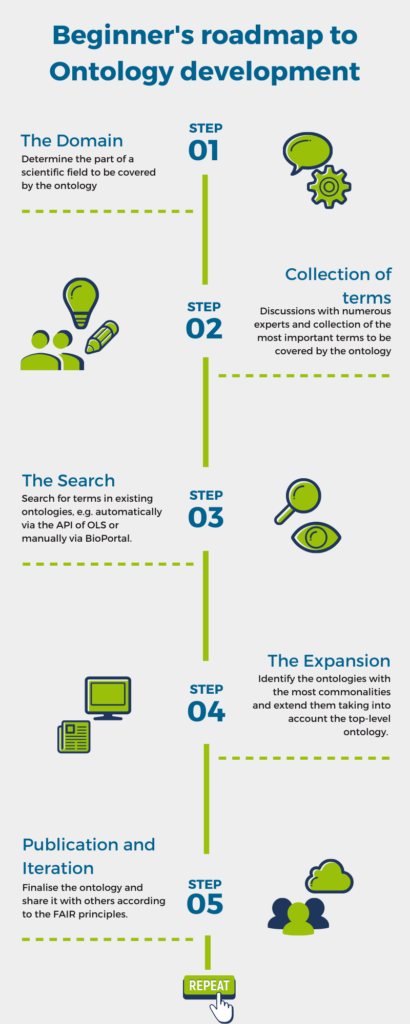Knowledge has different forms such as scientific papers, raw data, and even images. In most cases, knowledge can only be fully understood if the context is clear. For example, a table with concentrations in a reactor is only useful if the user knows the reactor and the substances used. Often there is no general, formal conceptualization of the knowledge presented. As a result, the data can only be understood in the context of its presentation. An ontology is an explicit specification of a conceptualization. Thus, ontologies are used to represent relationships between concepts and provide a more detailed representation of the relationships between these concepts.
Click here for more information: [wp-svg-icons icon=”book” wrap=”span”]
Would you like to learn how to use ontologies? 
NFDI4Cat provides you a guide with the basic steps to help you get started.
Step 1: The Domain
Define and delimit the domain of interest. This step is necessary to ensure that the ontology is well defined and the boundaries to other domains are clear.
Step 2: The Collection of Terms
Collect the main concepts to describe the defined and delimited domain. Next, sort these concepts in discussions with as many experts as possible. These discussions should also provide insight into the hierarchical structure of the concepts.
Step 3: The Search
Start by searching for existing ontologies for the concepts collected in the previous step. You can do this either manually or via an API on websites like Ontology Lookup Service or BioPortal .
Step 4: The expansion
Have you found an ontology that contains most of the concepts relevant to your domain? Expand this ontology by including the missing terms.
Step 5: Publication and Iteration
Ontology development is a collaborative process. Hence, once you are ready, you should share your ontology with other researchers in accordance with the FAIR principles. Iteration in general and at each step presented is strongly recommended until the ontology is sufficient for your purposes.
